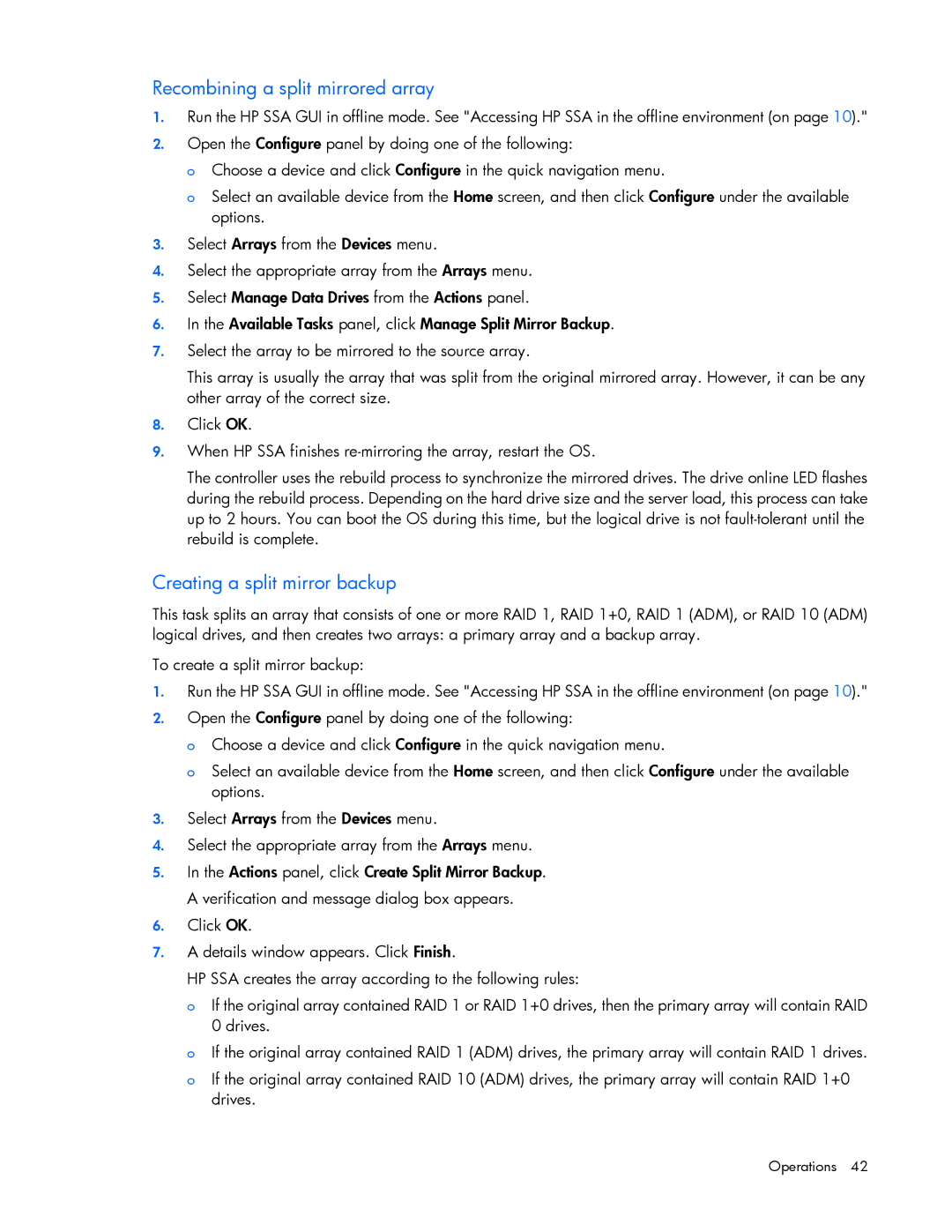Recombining a split mirrored array
1.Run the HP SSA GUI in offline mode. See "Accessing HP SSA in the offline environment (on page 10)."
2.Open the Configure panel by doing one of the following:
o Choose a device and click Configure in the quick navigation menu.
o Select an available device from the Home screen, and then click Configure under the available options.
3.Select Arrays from the Devices menu.
4.Select the appropriate array from the Arrays menu.
5.Select Manage Data Drives from the Actions panel.
6.In the Available Tasks panel, click Manage Split Mirror Backup.
7.Select the array to be mirrored to the source array.
This array is usually the array that was split from the original mirrored array. However, it can be any other array of the correct size.
8.Click OK.
9.When HP SSA finishes
The controller uses the rebuild process to synchronize the mirrored drives. The drive online LED flashes during the rebuild process. Depending on the hard drive size and the server load, this process can take up to 2 hours. You can boot the OS during this time, but the logical drive is not
Creating a split mirror backup
This task splits an array that consists of one or more RAID 1, RAID 1+0, RAID 1 (ADM), or RAID 10 (ADM) logical drives, and then creates two arrays: a primary array and a backup array.
To create a split mirror backup:
1.Run the HP SSA GUI in offline mode. See "Accessing HP SSA in the offline environment (on page 10)."
2.Open the Configure panel by doing one of the following:
o Choose a device and click Configure in the quick navigation menu.
o Select an available device from the Home screen, and then click Configure under the available options.
3.Select Arrays from the Devices menu.
4.Select the appropriate array from the Arrays menu.
5.In the Actions panel, click Create Split Mirror Backup. A verification and message dialog box appears.
6.Click OK.
7.A details window appears. Click Finish.
HP SSA creates the array according to the following rules:
o If the original array contained RAID 1 or RAID 1+0 drives, then the primary array will contain RAID 0 drives.
o If the original array contained RAID 1 (ADM) drives, the primary array will contain RAID 1 drives.
o If the original array contained RAID 10 (ADM) drives, the primary array will contain RAID 1+0 drives.
